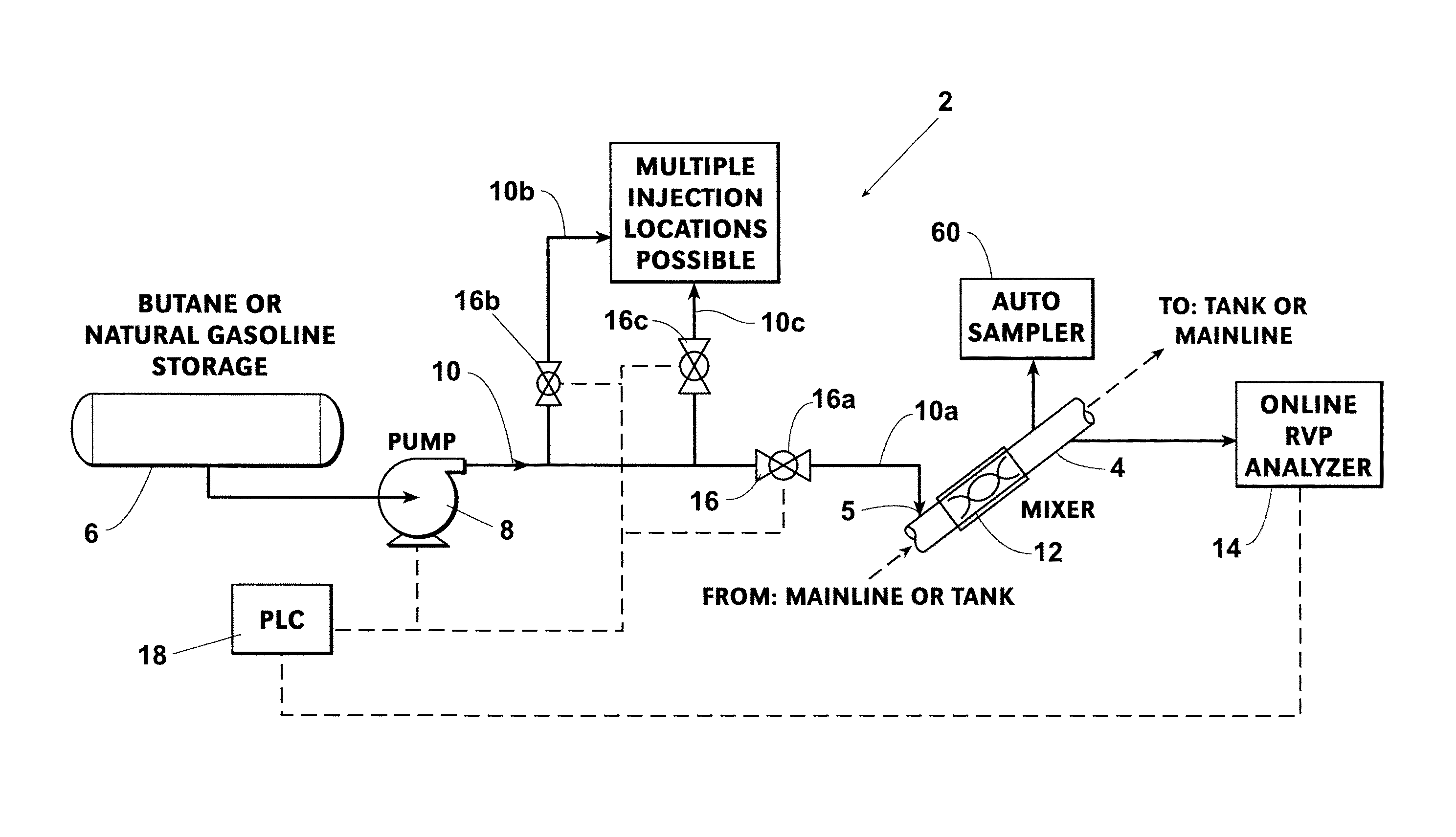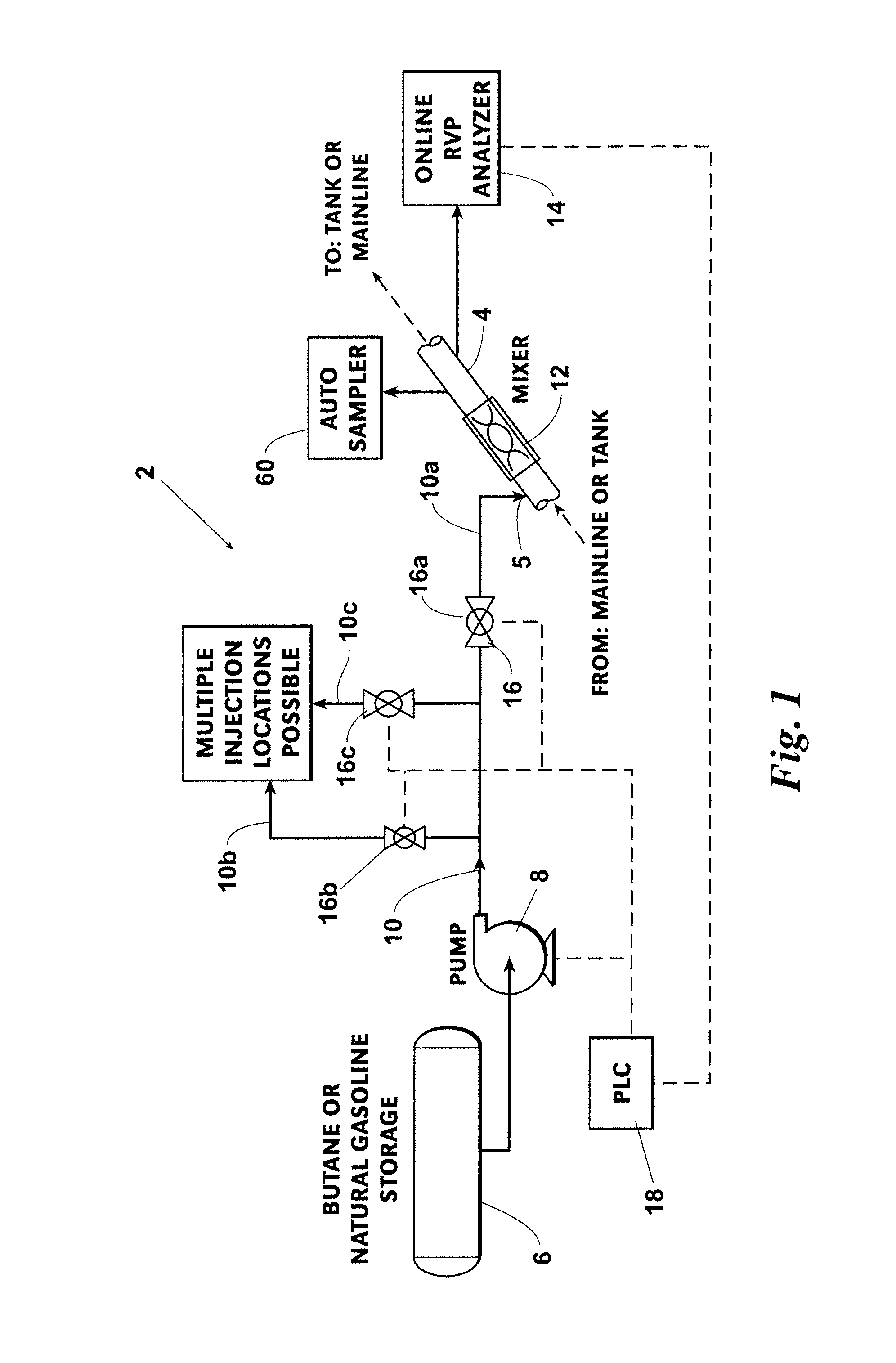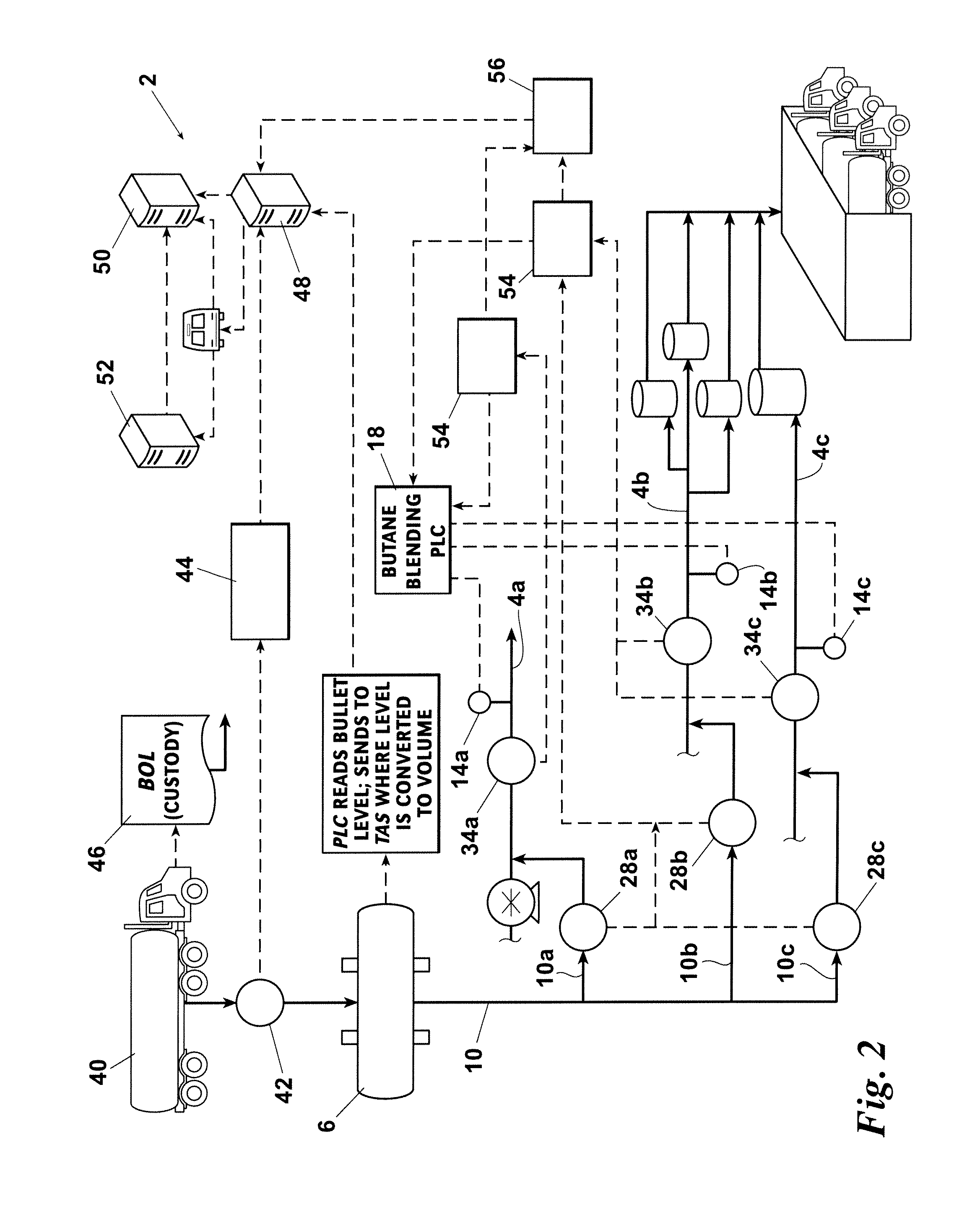System and method for adding blend stocks to gasoline or other fuel stocks
a blend stock and gasoline technology, applied in the petroleum industry, hydrocarbon oil refining, hydrocarbon oil treatment, etc., to achieve the effect of increasing summer blending capacity, reducing the necessary safety margin, and increasing blending volum
- Summary
- Abstract
- Description
- Claims
- Application Information
AI Technical Summary
Benefits of technology
Problems solved by technology
Method used
Image
Examples
embodiment 2
[0066]An embodiment 2 of the inventive in-line blending system and method is illustrated in FIGS. 12, and 3. In the inventive system 2, butane and / or other blend stock is blended with a stream of gasoline or other fuel stock flowing through a line 4. By way of example, but not by way of limitation, the line 4 can be (a) a main line or other line 4a of a petroleum pipeline system, (b) a line 4b or 4c running to a dedicated rack tank 15 or other tank, or (c) any other line.
[0067]Examples of fuel stocks which can be delivered through line 4 for blending purposes include, but are not limited to: gasoline; reformulated blend stock (RBOB); conventional blend stock (CBOB); ethanol; diesel; jet fuel; and / or other hydrocarbons. Examples of blending stocks which can be injected into the fuel stock stream traveling through line 4 include, but are not limited to: butane; natural gasoline; alkylate; iso-butane; naphtha; raffinate; gasoline blend stock materials; gasoline; and / or other hydrocarbo...
embodiment 100
[0089]A flow diagram illustrating an embodiment 100 of the inventive method for blending-up a tank heel 65 using an entire incoming batch of gasoline is provided in FIG. 4. It will be understood that the process shown and described can alternatively be used for blending (a) other stocks instead of or along with butane with (b) other fuel stocks instead of or along with gasoline. The inventive method 100 preferably comprises the steps of:[0090]a. receiving and / or entering (i) the volume (VB) of the incoming (i.e., not yet blended) batch of gasoline and (ii) the gasoline product grade which, along with the location, season, and any other factors, establishes the relevant maximum vapor pressure specification for the blend (and which, after factoring in the margin of safety necessary to reliably account for system accuracy and variability, also establishes an acceptable batch target vapor pressure (BTVB) for the blend);[0091]b. prior to receiving the batch, determining either automatica...
embodiment 150
[0097]Similarly, a flow diagram is provided in FIG. 5 of an embodiment 150 of the inventive method wherein the tank heel 65 is blended-up using only a portion, rather than all, of the incoming new batch of gasoline. The use of only a portion of the incoming batch of gasoline and / or other fuel stock to blend-up the tank heel 65 may be preferred or necessary when, e.g., a latter portion of the incoming batch will be delivered to a different tank, or when it is desired to complete the blending-up operation within a certain time frame ending prior to the delivery of the entire batch (e.g., during manned hours at the blending facility).
[0098]When using either embodiment 100 or 150 for blending-up the tank heel 65, it is also desirable to again test the tank following the blending operation to ensure that the entire content of the tank 66 complies with the vapor pressure specification (and / or other volatility specification) for the resulting tank blend.
[0099]The batch size of the gasoline...
PUM
| Property | Measurement | Unit |
|---|---|---|
| octane rating | aaaaa | aaaaa |
| time | aaaaa | aaaaa |
| volatility | aaaaa | aaaaa |
Abstract
Description
Claims
Application Information
 Login to View More
Login to View More - R&D
- Intellectual Property
- Life Sciences
- Materials
- Tech Scout
- Unparalleled Data Quality
- Higher Quality Content
- 60% Fewer Hallucinations
Browse by: Latest US Patents, China's latest patents, Technical Efficacy Thesaurus, Application Domain, Technology Topic, Popular Technical Reports.
© 2025 PatSnap. All rights reserved.Legal|Privacy policy|Modern Slavery Act Transparency Statement|Sitemap|About US| Contact US: help@patsnap.com



